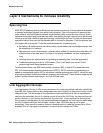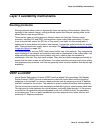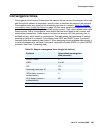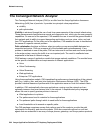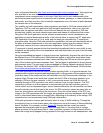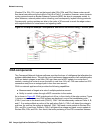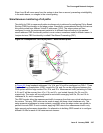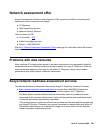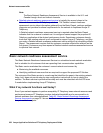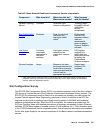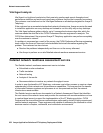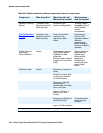
The Converged Network Analyzer
Issue 6 January 2008 347
Sites A and B will move away from the outage in less than a second, preventing unintelligibility
in the audio bearer, or outages in the voice signaling.
Simultaneous monitoring of all paths
The ability for CNA to measure all paths simultaneously is achieved by configuring Policy Based
Routing (PBR) functionality on the edge routers. Essentially, measurements through the various
links are sourced from different Virtual IP addresses (VIPs). The edge routers are then
configured to route the measurement packets to its different links according to the packets’
source address. PBR functionality exists in most routers, sometimes under a different name. In
Juniper devices, PBR functionality is called Filter-Based Forwarding (FBF).
Figure 94: Headquarters CNA deployment – Measurement plane
In Figure 94, three loopback addresses V1a, V1b, and V1c will be configured on CNA-1. Three
Generic Routing Ecapsulation (GRE) tunnels Ga, Gb, and Gc can be configured between the
CNA system and the edge routers R1a, R1b, and R1c. Measurement traffic pertaining to Paths
A, B, and C will be sourced from V1a, V1b, and V1c, and routed through Ga, Gb, and Gc,
respectively. The router will be configured to route traffic emerging from Ga, Gb, and Gc to
interfaces Ia, Ib, and Ic respectively.
The GRE tunnels allow the measurement traffic to emerge from their own virtual interfaces on
the routers. This way, PBR rules can be made to apply on those virtual interfaces only. This
setup presents advantages in some contexts, especially when the edge routers are unable to
perform line rate PBR. In such contexts, applying PBR rules to the measurement traffic only
helps prevent performance degradation. An alternative to building GRE tunnels is to configure
different VLANs for each of the measurement streams.




